The return of the Basking Shark
Michael Viney wrote about BASKING SHARKS. in his Another Life column in the Irish Times (1988)
Once, perched high among the sea-pinks on the summit of the Bllls Rocks ln Clew Bay I tracked the dorsal fin of a basking shark, cruising an evening sea towards Achlll. Its motion was almost Imperceptible, a small black triangle in the empty plain of the ocean, yet every aspect of that huge vista seemed charged by its presence. l should like to have been on the cliffs above Kennack Bay, on Cornwall's Llzard peninsula, on May l2th last year when not one but more than 200 basking sharks (500, at some bemused estimates) crowded into the bay, their fins spiking the sea between shore and horizon.
What brought them inshore was a chance concentration of zooplankton - the swarming, tiny organisms that graze the sea's spring growth of vegetable cells. Cetorphinus maximus is called the basking shark as if it came to the surface to sunbathe, but plankton is actually what brings it there. Cruising at two knots with its mouth wide open, it strains the sea through it's gill-rakers, taking in more than 2,000 tonnes of water every hour and sifting out a food that, concentrated in its stomach, looks very like tomato purée.
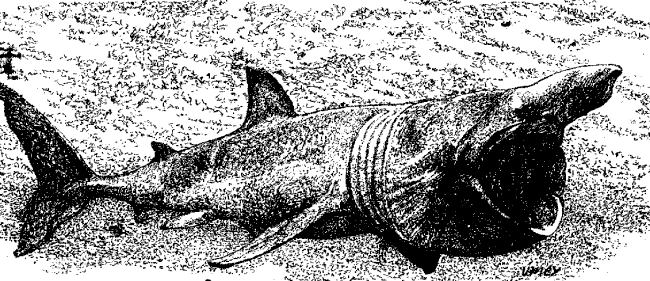 This much has been known for a long time, gleaned in the process of hunting the world's second-biggest fish (10 metres or more)* to get at the oil in its liver. But what hasn't been established until recently is whether the sharks deliberately seek out the ocean's rich eddies of food. Half a century ago, scientists thought this most unlikely, and ranked the animals as indiscriminate planktivores. Now unsurprisingly, it seems they are brighter than that.
This much has been known for a long time, gleaned in the process of hunting the world's second-biggest fish (10 metres or more)* to get at the oil in its liver. But what hasn't been established until recently is whether the sharks deliberately seek out the ocean's rich eddies of food. Half a century ago, scientists thought this most unlikely, and ranked the animals as indiscriminate planktivores. Now unsurprisingly, it seems they are brighter than that.
Marine scientists from the University of Plymouth tracked foraging groups of the sharks in the summers of 1996 and 1997 measured the density of zooplankton In their paths. Plankton is seasonally richest at the boundaries of water masses, or "fronts" where warm and cool waters collide, and such a boundary exists about eight kllometres off Plymouth, at the west of the English Channel.
The sharks foraged along the thermal fronts until they found the richest, most profitable plankton patches, concentrated by tidal currents. There they remained for a day or more before moving to a new patch, taking perhaps two days to travel 20 kilometres.
Tracking the sharks along the tidal slicks, the biologists found the water busy with big shoals of mackerel that often broke water's surface ahead of the them and with shoals of small whiting and grey mullet. Gannets arrived there, too, plunging after the fish.
Within the myriad organisms of plankton the sharks have a favourite - a species of tiny copepod crustaceans called Calanus - and these are closely linked to changes in plankton distribution produced by climate fluctuations. Cetorhinus could help keep track of these changes - and of fish stocks (Calanus is also an important food for herring, for example). In the 1980s a shark was fitted with a UHF radio transmitter and tracked by satellite for l7 days off the west coast of Scotland, so this ls the sort of strategy that fishery scientists might adopt.
All this is enlightening when matched to the history of hunting the "sun-fish'' around the coasts of Ireland. Its liver can weigh a tonne and yield up to 100 gallons of oil, and until the distillation of paraffin from coal in 1850 this was widely used in home lighting and manufacturing (it was filling the "lanthorns'' in the streets of Dublin as early as 1742).
 Most of the sharks were caught in April and May, sometimes in huge numbers. There ls a record of boats from Galway and Connemara killing up to 200 off the coast on two days of early May In 1815. Galway hookers sailed as far as a well-known "sun-fish bank" parallel with the Connacht coast and some 30 miles west of Achill Head. Was this, ln actuality the shifting line of a seasonal plankton front?
Most of the sharks were caught in April and May, sometimes in huge numbers. There ls a record of boats from Galway and Connemara killing up to 200 off the coast on two days of early May In 1815. Galway hookers sailed as far as a well-known "sun-fish bank" parallel with the Connacht coast and some 30 miles west of Achill Head. Was this, ln actuality the shifting line of a seasonal plankton front?
Fluctuations in plankton blooms and fronts would match the unpredictable catches that often disappointed the l9th-century shark fishermen. They could also account for the variable fortunes and final decline of the fishery revived at Keem Bay, Achill, in the middle of this century. Over 1,000 sharks a year were being caught there in the 1950s, but 20 years later only one crew remained.
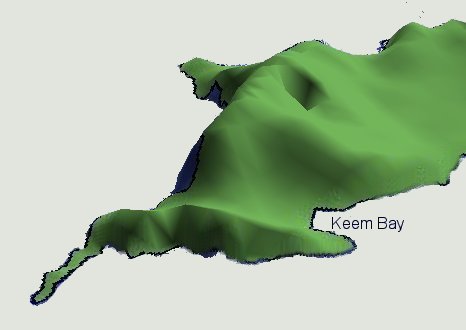
The decline was blamed on over-exploitation of a local stock. But the pattern of basklng shark distribution and abundance around Ireland now seems quite different from that of a century ago.
A sightlng scheme organised by the Irish Whale and Dolphln Group in 1993 recorded 425 sharks all round the coast, in groups of up to 20, but the sharks were scarce where they were once fished. and most abundant at the south-west and on the east coast. That was probably a poor year for sightings, but there is probably now a better chance of apot ting a Cetorhinus Maximus from an Irish Sea car-ferry than from a currach off Connacht. The season for sightings has also shifted from spring to high summer, suggesting that plankton is blooming later In the year.
The basking shark has been hunted continuously abound Britain and Ireland (largely by Norwegians) for its liver oil (squalene) which has special commercial uses, and for its fins, which are exported to the Far East for shark's-fin soup. But Britain at least, has now bowed to conservation arguments and given the shark protection in territorial waters.
Nothing. is known about the animal's breeding ecology, or even where it spends the winter. The sharks stop feeding in the autumn and disappear southwards, perhaps to wintering grounds off Morocco. They need to grow a new set of gill-rakers and - as one hypothesis runs - spend the winter "cruising in some energy-efficient mode at great depths beyond the continental margins''.
* The biggest is the tropical whale shark, Rhincodon typus, another plankton-feeder-, 12 metres or more and 20 tonnes. A third plankton-feeding giant, the rare ''megamouth" Megashasma pelagios, lurked unknown in the tropical deeps until 1976, but iis only about four metres long.
Permission to reproduce article and basking shark - courtesy Michael Viney
 1 | 2 | 3
1 | 2 | 3
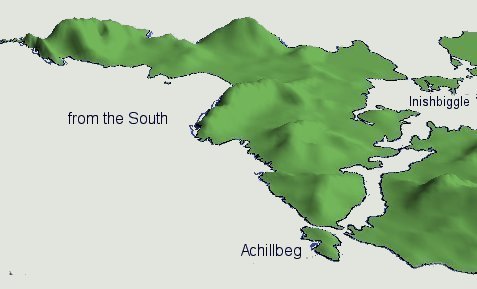
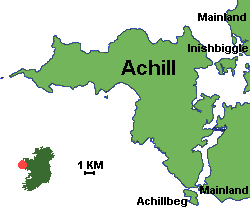

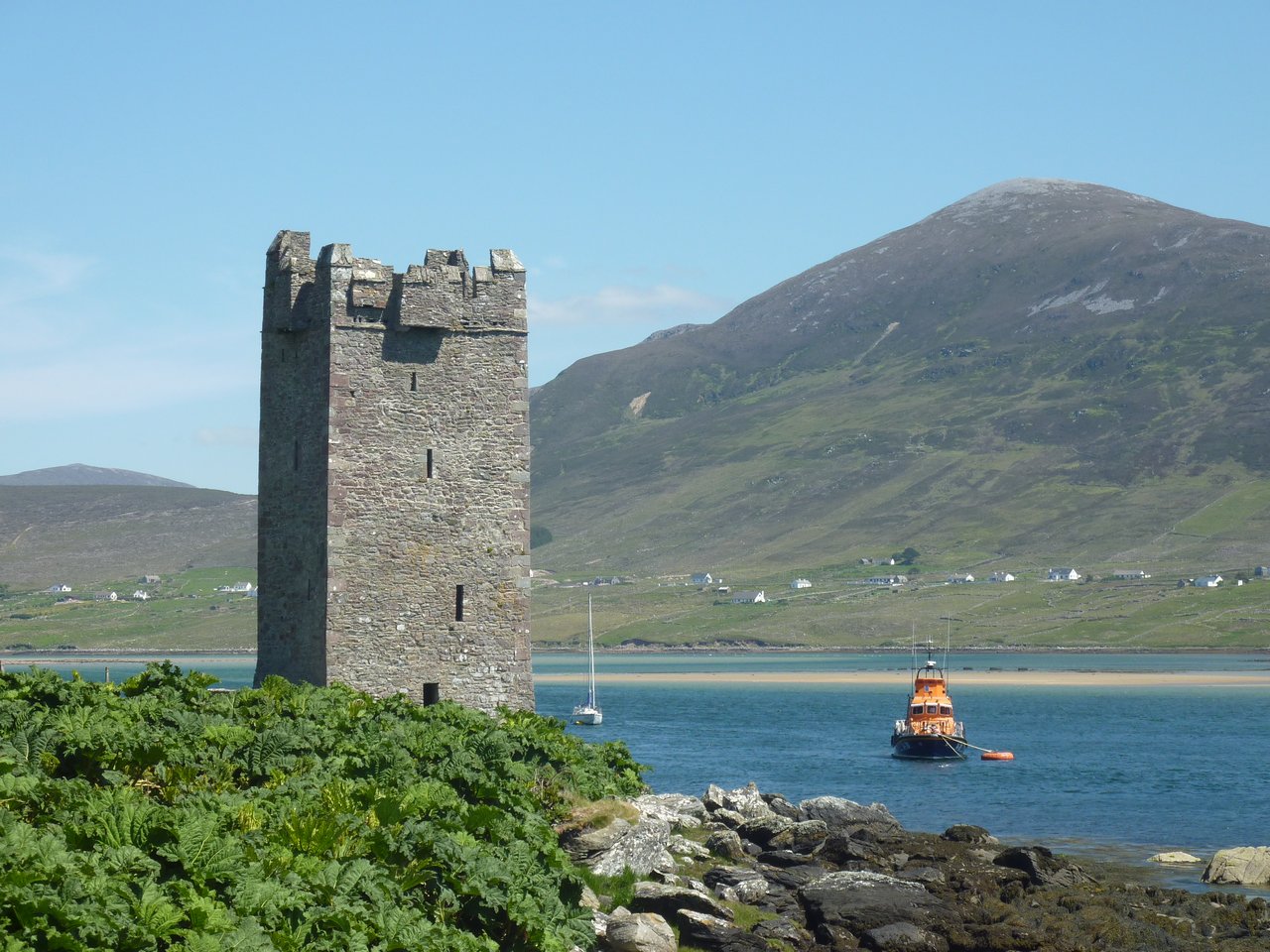

 Most of the sharks were caught in April and May, sometimes in huge numbers. There ls a record of boats from Galway and Connemara killing up to 200 off the coast on two days of early May In 1815.
Most of the sharks were caught in April and May, sometimes in huge numbers. There ls a record of boats from Galway and Connemara killing up to 200 off the coast on two days of early May In 1815. 